The Power of Coaching (Part 2: Mathias’ Coaching Journey)
As leadership coaches, we are often asked what a coaching session is like, when it’s a good time to start coaching, and about our personal experiences with coaching. We set out to answer those questions in this two-part series reflecting on our respective coaching journeys. This post reflects Mathias’ experience on coaching.

This is part two of a mini series reflecting on our respective coaching journeys. (Check out part one about Sara’s reflections on coaching.)
Mathias’ Thoughts on Coaching
In my second company, there was a moment when I suddenly found myself in the role of sole CEO of the company. Another co-founder and I had been splitting the role until recently, and eventually realized that it brought too much confusion to the team. So we split up our responsibilities and demarcated our titles. That left me in a pickle: I now needed to figure out what a CEO does.
Quick check: can you name five things that are part of a CEO’s job responsibilities? If you were able to crank out a list within seconds, I salute you. For me, back then, it was mostly guesswork.
I talked to a friend who recommended that I get a coach to help me–I had no idea that was a thing. Which I’ll excuse myself for, as I also had no idea, in my earliest days in management, that one-on-ones are a thing you do. He recommended a few and, after an initial conversation with each, I picked one to work with.
Tip: When you look for a coach, make sure you talk to more than one for a half hour or so to see if the chemistry is right and if their approach and experience set matches what you’re after. It’s not always important to have someone who’s gone through the exact same experience you’re going through, but they do need to be able to empathize with it. That’s exactly what I found in my coach–my choice turned out to be a good one, and we went on to work together for more than five years.
Around the time we started working together, I found myself in a frustrating situation. I had recently assumed a new role as CEO, and we were just moving our Berlin team into a new office.; I was still assembling office furniture as part of my day job, which left me in an utterly foul mood.
Believe me when I say that assembling office furniture should not be beneath the job of the CEO–far from it! They should be the first one grabbing that little IKEA allen key to assemble, or getting a pry bar out of their desk drawer when old furniture needs to be removed. (You do have a pry bar in your desk drawer for situations like this, don’t you?) I was also prepping to hire a customer support team, so I had my hands full.
Distractions abounded, and I could barely focus on what constituted meaningful work in my new role. But that’s when I ended up back at that dreaded question: what does my role look like?
My coach was a lifesaver. After my first session, she had me write up a list of all the things I’d been doing lately. I kept adding to that list over the following two weeks–it was surprisingly long. It’s really only when you spell out everything you do that you find out where you truly spend your time; this was especially true for me back then, still pretty fresh in moving from an engineering role into leading an entire company that was growing.
My coach also had me write up a second list of things I should be doing instead, things that I thought provided more value to the organization. This list included topics like hiring, thinking about pricing, creating a strategy, product roadmaps, thinking about organizational structure, manifesting values, and so on.
In a follow-on session, we categorized both lists as activities that keep me below the water line and activities that keep me above it. Everything that’s forward-looking, strategic, or in any way has a larger impact to the organization, all those activities are above the water line. Everything below can induce a constant feeling like you’re drowning in work that’s somehow urgent and needs to be done, but that doesn’t leave any larger impact beyond a desk assembled and ready to be used.
For the work below the water line, we started identifying things that I could delegate to someone else, or that we could hire a contractor for. Other things I would simply discard, as they weren’t that important and could potentially wait until a later time. And then we mapped out a plan for the next six months on how I could get above the water line most of the time. There would always be dips back down below, but as long as those are controlled and temporary, we accepted that as normal.
I’m sure this situation will be familiar to many founders and senior executives, even middle managers. Nowadays, I work with founders in these exact circumstances. It’s a regular occurrence in my coaching practice, and I still resort to the tool that my coach had me use when I started out with coaching.
One of my lessons from being a coachee is that many of the tools you need to make progress, or to find a way to slowly but surely get yourself out of a rut, are simple. They’re not complicated, nor should they be. The more complicated a tool or framework, the less likely you’ll stick to it. Heck, you may not even remember what the next step was without looking it up again and again.
Over the years, the work with my coach changed. I had challenges with co-founders and conflicts in the team to resolve, while finding better ways to make decisions and communicate them. We even worked together on a plan to recover my lost German-ness after my coach pointed out that I had become very American. I was taken aback by this but also wasn’t surprised–I’d been traveling to California for work and have been under the American influence for years, but nobody had spelled it out like that. (Except my wife, about two years later, who observed the same thing.)
That experience outlined another role a coach slips into: They spell out hard truths or third party perspectives that nobody else wants to. Nobody from my team would’ve told me I’d become more American;to them, the transformation likely provided comfort, as it may have felt more familiar to work with me. But to me, it was problematic. When Sara and I started working together as CEO and CTO, respectively,, I had vowed that I’d go all German on the team and the organization: I’d bring process and clarity where there was none; I’d be honest and forthcoming with my thoughts and my feedback; I’d focus on communicating clearly and without any of the fuzz and fluff that’s more common in the US than it is in Germany.
Somehow, she observed, my objective seemed to have gotten lost and my expressions pointed to a much softer approach than I had set out to take. So we worked on a plan to recover my lost German-ness, which gave me a nice opportunity to build a set of personal goals for myself. We defined what the German-ness I intended to bring to the table entailed–there were things on there like:
- Use words like “thank you” and “great job” on the right occasions and for maximum impact.
- Use “sorry” only when it’s really warranted rather than for every small thing, to make it count when it’s needed most.
- Use fewer reaffirming fluff words and phrases (e.g. “that’s a great question” or “great you’re bringing this up”) and focus on the matter at hand right away.
- Clearly state what I think of something and why.
This is the exact list of things I wanted to focus on, coming straight off my list of personal goals for that year. It provided a great set of guiding principles for me on how I would tune my communication with the team from here on out. That’s the third thing a coach can help you with: turning observations and inclinations into plans for action, identifying what’s driving them, and what steps can be taken to reinforce them.
I can say with confidence that working with a coach has made me a different–a better–person. And I’m not saying that because these days I work as a coach. Without my coach as a guide and an outside party that’s cheering only for me but also bringing up hard truths, I probably wouldn’t have ended up where I am now. Some of the sessions I’ve experienced were really intense, going deep on a challenging situation, sometimes forcing me to take the other party’s perspectives and to face up to things that I had done or that I couldn’t say, even though they needed to be said. But every time I came out feeling uplifted and supported, like a weight was lifted off my shoulders and like I have one or more paths forward where I didn’t see any way to move before.
So how did I end up being a coach myself? The part I enjoyed most about my job as CEO and CTO was working with people, in a one-on-one setting, not just pretending but knowing that I don't have the answers to all the questions they come to me with. As part of my work with my direct reports I asked them questions to gauge how they're thinking about the problem or situation they're presenting to me. At first that annoyed people. After all, as the boss I was supposed to provide the answers and unblock them so they could move on, right? In those same conversations I also connected patterns and strings for them that might not have been immediately visible, especially for those connections to teams and processes of teams other than their own.
Or I provided them a perspective when they were upset with someone from the team, trying to help them understand the multitudes of perspectives, voices, and goals that exist, and sometimes collide, within an organization. And, finally, I provide encouragement and a sometimes not so gentle nudge that they have the power to bring about change. Of course I only did that when I understood that they could actually do that. Things that affected the larger organization or weren't within their immediate grasp to change, were mine to fix.
I enjoyed these parts of my job so much, I realized that I wanted to work with a broader variety of people in this same capacity, helping them become better leaders, managers, founders, and executives, being at the sidelines, cheering them on, providing a sounding board, and empathy, having gone through many of their challenges and struggles myself.
Read our newsletter
Sign up to receive our journal updates and to get previews of our book.

